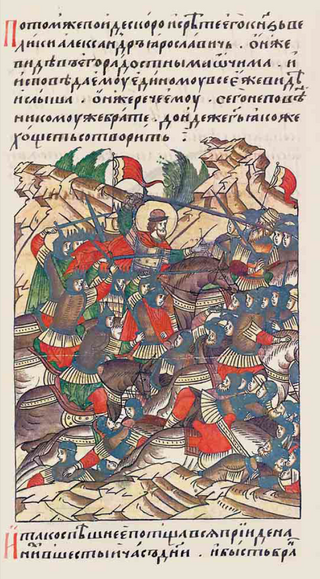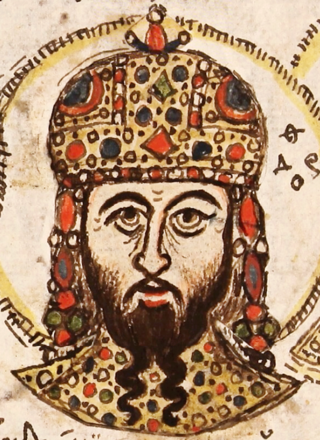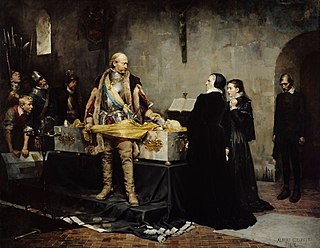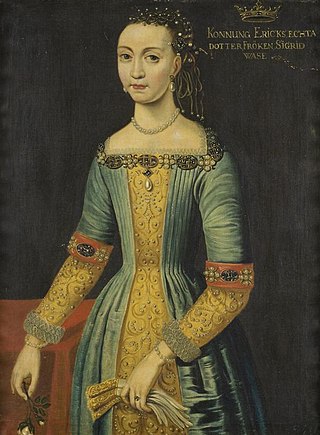Events
| | This section needs expansion. You can help by adding to it. (July 2015) |
- Coronation of Charles IX.
- The Swedes retake Paide
- Magnus Brahe (1564–1633) becomes the Lord High Constable of Sweden
| Years in Sweden: | 1604 1605 1606 1607 1608 1609 1610 |
| Centuries: | 16th century · 17th century · 18th century |
| Decades: | 1570s 1580s 1590s 1600s 1610s 1620s 1630s |
| Years: | 1604 1605 1606 1607 1608 1609 1610 |
Events from the year 1607 in Sweden
| | This section needs expansion. You can help by adding to it. (July 2015) |
| | This section needs expansion. You can help by adding to it. (July 2015) |

Year 1574 (MDLXXIV) was a common year starting on Friday of the Julian calendar.

Year 1320 (MCCCXX) was a leap year starting on Tuesday of the Julian calendar.
The 1240s was a decade of the Julian Calendar which began on January 1, 1241, and ended on December 31, 1250.
Year 1250 (MCCL) was a common year starting on Saturday of the Julian calendar.

Year 1240 (MCCXL) was a leap year starting on Sunday of the Julian calendar.

Year 1249 (MCCXLIX) was a common year starting on Friday of the Julian calendar.

Year 1254 (MCCLIV) was a common year starting on Thursday of the Julian calendar.

Year 1266 (MCCLXVI) was a common year starting on Friday of the Julian calendar.

Charles IX, also Carl, reigned as King of Sweden from 1604 until his death. He was the youngest son of King Gustav I and of his second wife, Margaret Leijonhufvud, the brother of King Eric XIV and of King John III, and the uncle of Sigismund, who became king both of Sweden and of Poland. By his father's will Charles received, by way of appanage, the Duchy of Södermanland, which included the provinces of Närke and Värmland; but he did not come into actual possession of them till after the fall of Eric and the succession to the throne of John in 1569.

John III was King of Sweden from 1569 until his death. He was the son of King Gustav I of Sweden and his second wife Margaret Leijonhufvud. He was also, quite autonomously, the ruler of Finland, as Duke John from 1556 to 1563. In 1581 he assumed also the title Grand Prince of Finland. He attained the Swedish throne after a rebellion against his half-brother Eric XIV. He is mainly remembered for his attempts to close the gap between the newly established Lutheran Church of Sweden and the Catholic Church, as well as his conflict with and murder of his brother.

Charles VIII, contemporaneously known as Charles II and called Charles I in Norwegian context, was king of Sweden and king of Norway (1449–1450).

Prince Charles Philip of Sweden, Duke of Södermanland, was a Swedish prince, Duke of Södermanland, Närke and Värmland. Charles Philip was the second surviving son of King Charles IX of Sweden and his second spouse, Duchess Christina of Holstein-Gottorp.

Baron Klaus Eriksson Fleming was a Finnish-born member of the Swedish nobility and admiral, who played an important role in Finnish and Swedish history during the rise of Sweden as a Great Power. He was a trustee of kings John III and Sigismund Vasa. His wife was Ebba Stenbock.

Sigrid Eriksdotter of Sweden was a Swedish princess, the legitimized daughter of King Eric XIV of Sweden and of his lover, later spouse and queen, Karin Månsdotter.
Charlotta Arfwedson was a Swedish countess and artist. She was politically active and acted as adviser of her second spouse, nobleman Carl Carlsson Mörner (1755–1821). She was a member of the Royal Swedish Academy of Arts (1793).

Events from the year 1690 in Sweden
Events from the year 1611 in Sweden
Events from the year 1566 in France.
Events from the year 1574 in France